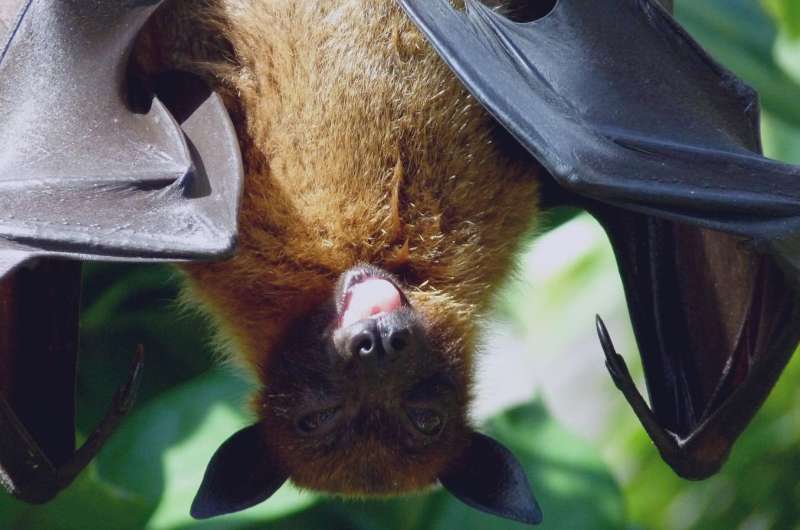January 10, 2017 weblog
Analysis of developing bat fetuses suggests common ancestor developed echolocation

(Phys.org)—A team of researchers from several institutions in China and one in Ireland has found evidence in the ears of developing bat fetuses that suggests all bats evolved from a common ancestor that had developed echolocation. In their paper published in the journal Nature Ecology & Evolution, the researchers outline their study and results and explain why they believe they have found evidence of some bats losing their echolocation abilities. M. Brock Fenton and John Ratcliffe with Western University and the University of Toronto respectively offer a News & Views piece in the same journal issue on the work done by the team and offer opinions regarding the results.
As most are aware, many bat species have the ability to emit sounds and to hear those sounds echoed back as a means of hunting and navigation, i.e., echolocation. Less well known is that some bats, such as fruit bats, do not have this ability. This difference between species has caused scientists to wonder if the two evolved separately or if they have a common ancestor that had echolocation abilities. To find the answer, some researchers have sought fossil evidence while others have looked to gene histories—neither approach has solved the puzzle. In this new effort, the researchers took a different approach, studying the development of bats to see if differences could be discerned.
The study involved using X-ray microradiography to study developing bat fetuses, specifically the workings of their inner ears. Adult bats that have echolocation abilities have large cochlea; others have cochlea that are no larger than those of other mammals relative to their body size. But the researchers wondered what happens as the bats develop. In studying the X-rays, the researchers found that bats from two species that do not develop echolocation developed larger-than-normal cochlea during their early stages of development—similar in size to the cochlea of several species of bats that do develop echolocation.
The team compared what they had found with developing cochlea in other non-bat mammal species as well, and found that the cochlea grew larger in all of the developing bat fetuses than it did in all of the non-bat species they looked at. This, the researchers suggest, offers evidence that all bats have a common ancestor that developed echolocation—those modern bats without echolocation, they claim, simply lost it over time.
More information: Zhe Wang et al. Prenatal development supports a single origin of laryngeal echolocation in bats, Nature Ecology & Evolution (2017). DOI: 10.1038/s41559-016-0021
Abstract
Bat laryngeal echolocation is considered as one of the most complex and diverse modes of auditory sensory perception in animals and its evolutionary history has been the cause of many scientific controversies in the past two decades. To date, the majority of scientific evidence supports that bats (Chiroptera) are divided into two subordinal groups: Yinpterochiroptera, containing the laryngeal echolocating superfamily Rhinolophidae as sister taxa to the non-laryngeal echolocating family Pteropodidae; and Yangochiroptera, containing all other laryngeal echolocating lineages. This topology has led to an unanswered question in mammalian biology: was laryngeal echolocation lost in the ancestral pteropodids or gained convergently in the echolocating bat lineages? To date, there is insufficient and conflicting evidence from fossil, genomic, morphological and phylogenomic data to resolve this question. We detail an ontogenetic study of fetal cochlear development from seven species of bats and five outgroup mammals and show that in early fetal development, all bats including the non-laryngeal echolocating pteropodids have a similarly large cochlea typically associated with laryngeal echolocation abilities. The subsequent cochlear growth rate in the pteropodids is the slowest of all mammals and leads to the pteropodids and the non-echolocating lineages eventually sharing a similar cochlear morphospace as adults. The results suggest that pteropodids maintain a vestigial developmental stage indicative of past echolocation capabilities and thus support a single origin of laryngeal echolocation in bats.
© 2017 Phys.org





















